
Research
Explore our research projects and initiatives.
School of Art research and initiatives with students
Our research activities leverage our skills and experiences as artists and scholars to create impactful learning engagements with students through material investigation, cultural exploration and social participation.
Ellen Messinger & Mark Tebeau
Though it is Arizona's largest botanical garden and has been an established touchstone of the community for more than 100 years, many students in Arizona State University Professor Ellen Meissinger's ART 427/527: Art on Paper class didn't even know the Boyce Thompson Arboretum existed.
That is, until the School of Art students were given an assignment in which they collaborated with students from ASU's School of Historical, Philosophical and Religious Studies' public history program to create artwork reflecting the arboretum’s historical significance and unique sense of place.
An exhibit featuring the results will be on display at Noble Library on ASU's Tempe campus from Jan. 13–Feb. 27, and at the Fletcher Library on ASU's West Valley campus from March 17–April 11.
The students first learned about oral histories with Associate Professor Mark Tebeau, and were then split into research groups, each assigned two oral histories. This gave students not only historical context for the arboretum, Meissinger said, but also revealed a personal and emotional connection that so many share.
Students then visited the Boyce Thompson Arboretum, receiving both a guided tour and the opportunity to explore the space themselves.
Click the button below to read the full article by Julia Taylor.
Photo courtesy of Julia Taylor.
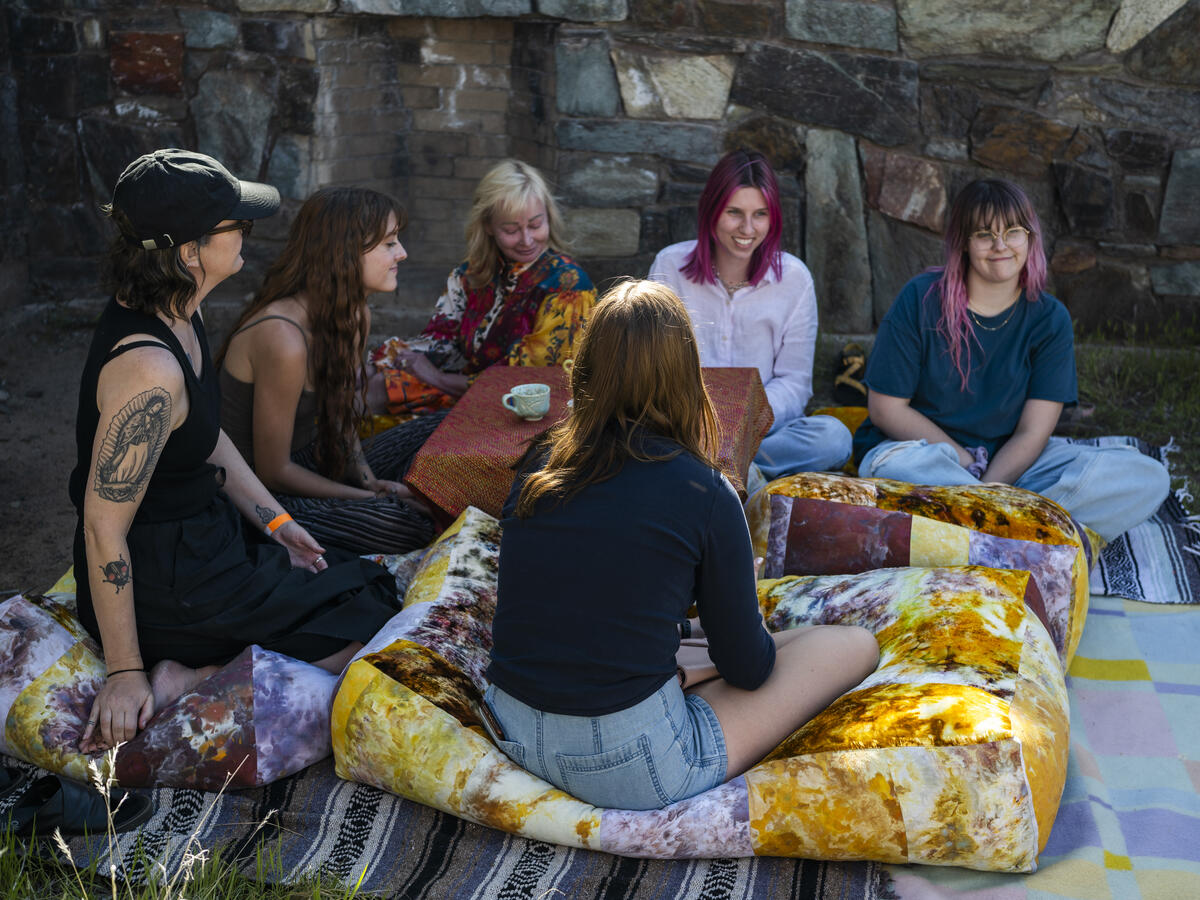
Erika Lynne Hanson & Katie Parker
“Ceramics + Textiles + Site: Body/Architecture/Land” is the evolution of the Spring 2023 course Ceramics + Textiles + Site: Surface/Architecture/Land” and was facilitated by Erika Lynne Hanson, Associate Professor of Textiles, and Katie Parker, Associate Professor of Ceramics.
Piloted in the Spring of 2023, this interdisciplinary course used ceramics and textiles as lenses with which to respond to sites ranging from the body to architecture to landscape. Students from multiple disciplines, not limited to studio arts, and including multiple students from the design school, explored creative processes such as press molding, weaving, surface design, dyeing, tile making, knitting, hand building, weaving and stitching. These processes were used as conceptual and material frameworks to develop site-specific pieces at Arcosanti in Mayer, AZ. Students and faculty worked individually or in teams to create site-specific works, which were installed and displayed across Arcosanti’s grounds. A public walkthrough of the installations included talks from all the artists involved. Hanson and Parker hope to continue this course into the future, helping students to develop research and work that considers issues of ecology, body and site.
Founded in 1970, Arcosanti is a project of The Cosanti Foundation, a 501(c)(3) nonprofit organization whose mission is to inspire a reimagined urbanism that builds resilient and equitable communities sustainably integrated with the natural world. Arcosanti pursues this mission through experimentation and application of the principles of arcology, a combination of the words architecture and ecology that offers an alternative to urban sprawl.
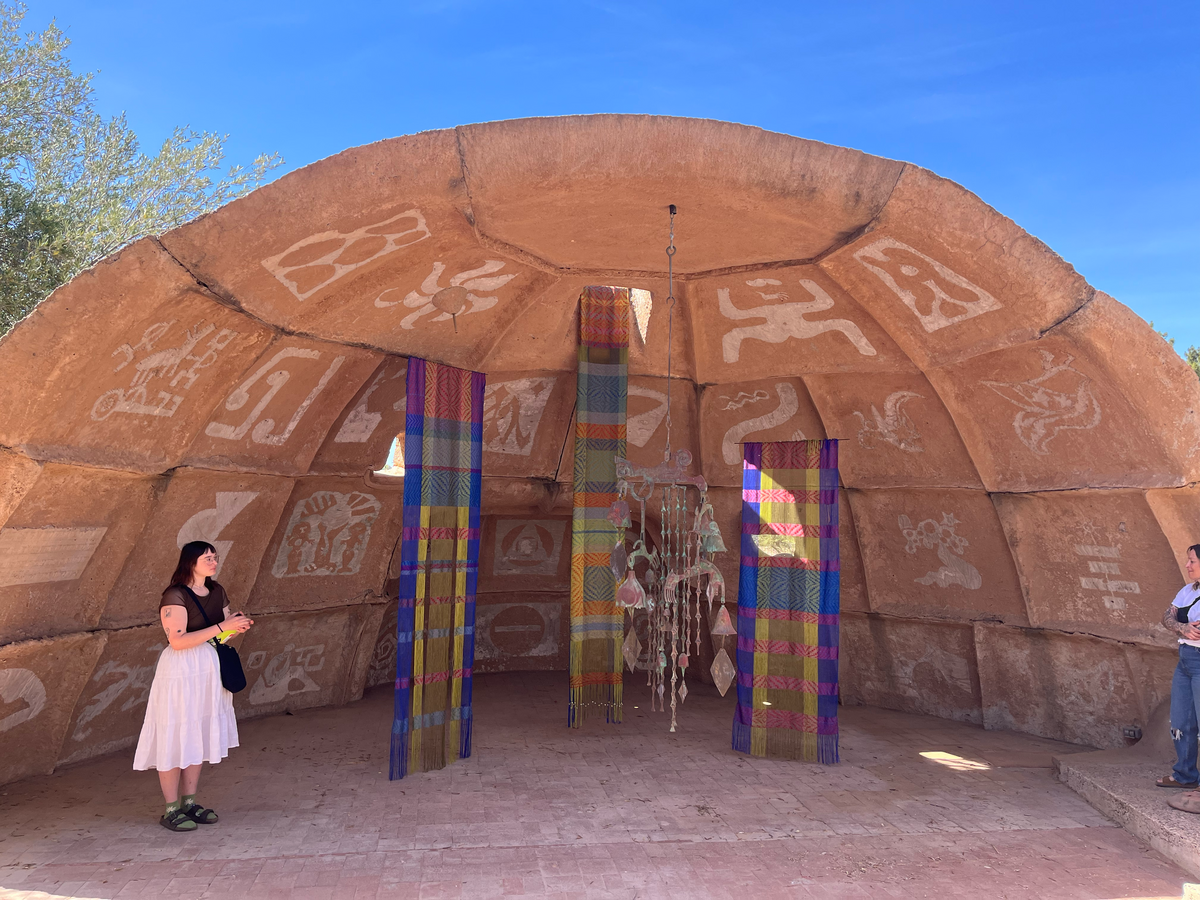
Erika Lynne Hanson & Katie Parker
Ceramics + Textiles + Site: Surface/Architecture/Land was facilitated by Erika Lynne Hanson, Associate Professor of Textiles, and Katie Parker, Associate Professor of Ceramics. This course used ceramics and textiles as lenses with which to respond to sites ranging from the body, architecture, and land. Creative processes such as press molding, weaving, surface design, dyeing, tile making, knitting, hand building, and stitching were used as conceptual and material framework to develop site-specific pieces at Cosanti Studios in Paradise Valley, AZ.
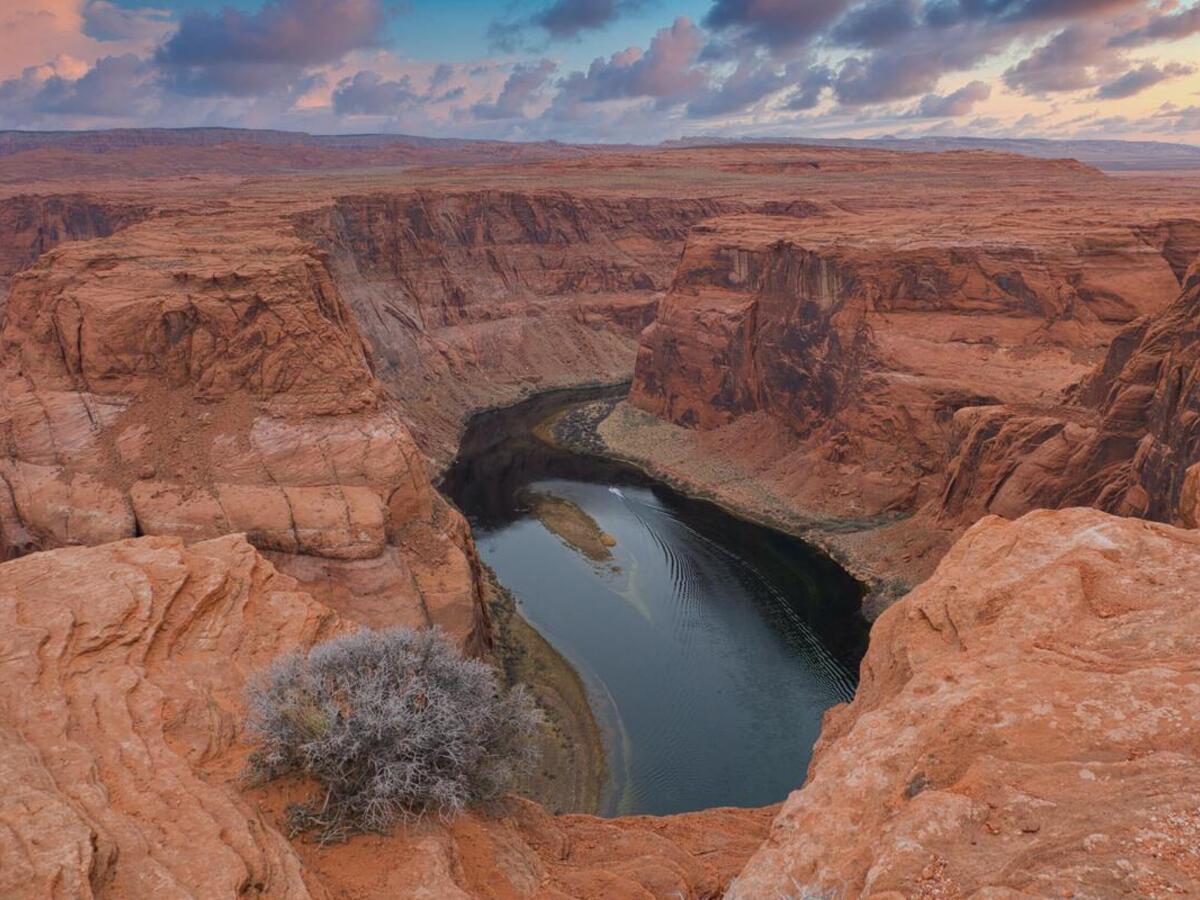
Julie Anand, Garth Paine & Sabine Feisst
In response to Arizona’s unprecedented water challenges, the Narrative Storytelling Initiative at Arizona State University is engaging students in conversations about urgent water issues through a series of interlinked courses.
Water Narratives and Societal Change is complemented by five courses offered within the Herberger Institute for Design and the Arts: Music, Nature and Sustainability, Art and Ecology, Introduction to Digital Sound, Introduction to Storytelling and a Narrative and Emerging Media portfolio course.
These courses are consciously working across multiple storytelling modes, including audio, visual art, music, creative writing and more. Each course instructor has committed to a module or a unit and a water-focused class project as an outcome.
Follow this link to read the entire article written by Erin Peters.
Image by Mark Valentine.
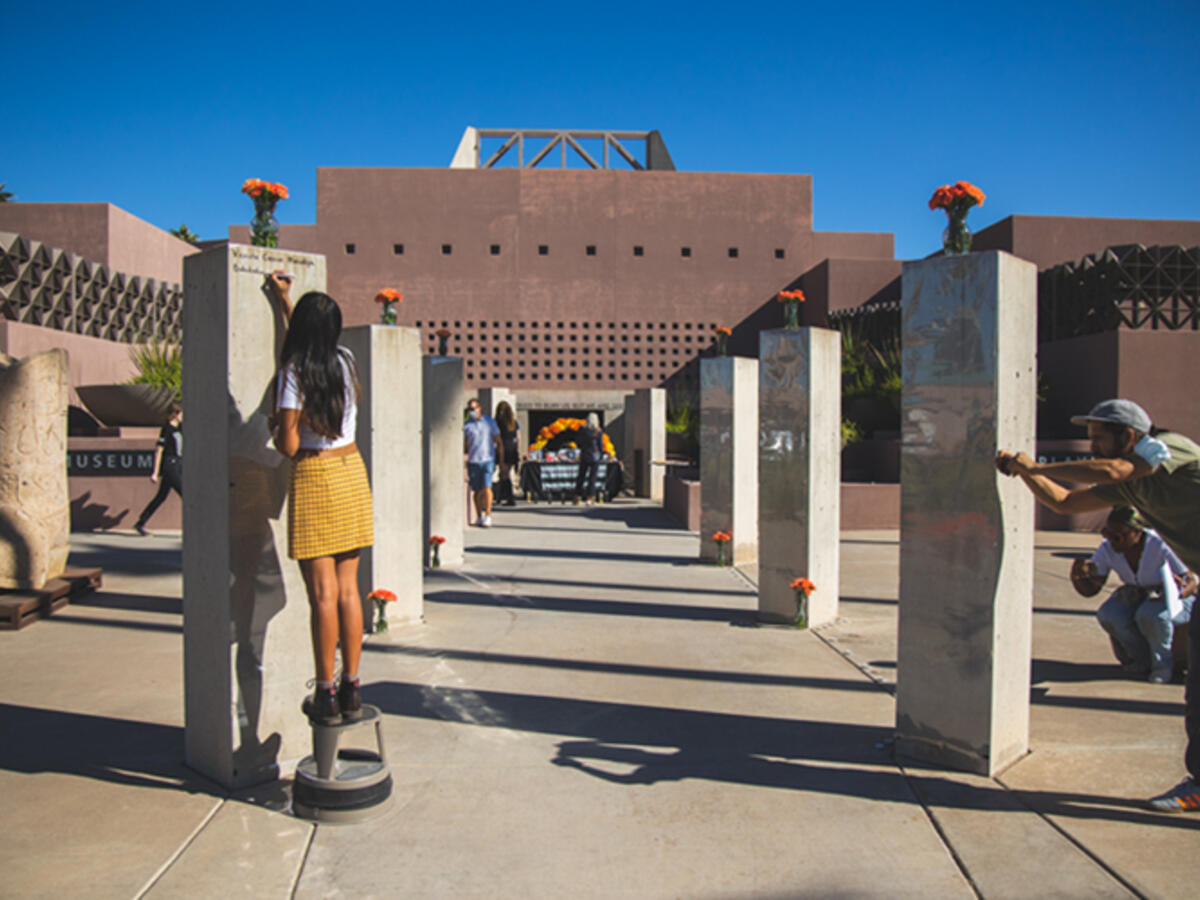
Gregory Sale & Julio César Morales
Beginning in Spring 2021 with Art and Social Justice (ART 494) and then developing into a Fall 2021 graduate-level seminar Art and Justice (ARA 591) and taught with former ASU Art Museum curator Julio César Morales, Gregory Sale co-led a collaborative, transdisciplinary exploration into the ways in which academia can embrace system-impacted leaders while contributing to the learning of ASU students. Students and community justice scholars engaged with one another throughout the year, culminating in 12 collaborative public programs in response to and as part of ASU Art Museum's 2021 exhibition "Undoing Time: Art and the Histories of Incarceration." For a full day, the collective "took over" the museum to de-center notions of safety, imprisonment and control. The forming of the Art and Justice Leadership Cohort explores how a socially engaged art practice such as Future IDs can partner with academia and engage its power and its privilege to embrace justice-involved leaders, furthering their effectiveness as catalysts of social change.
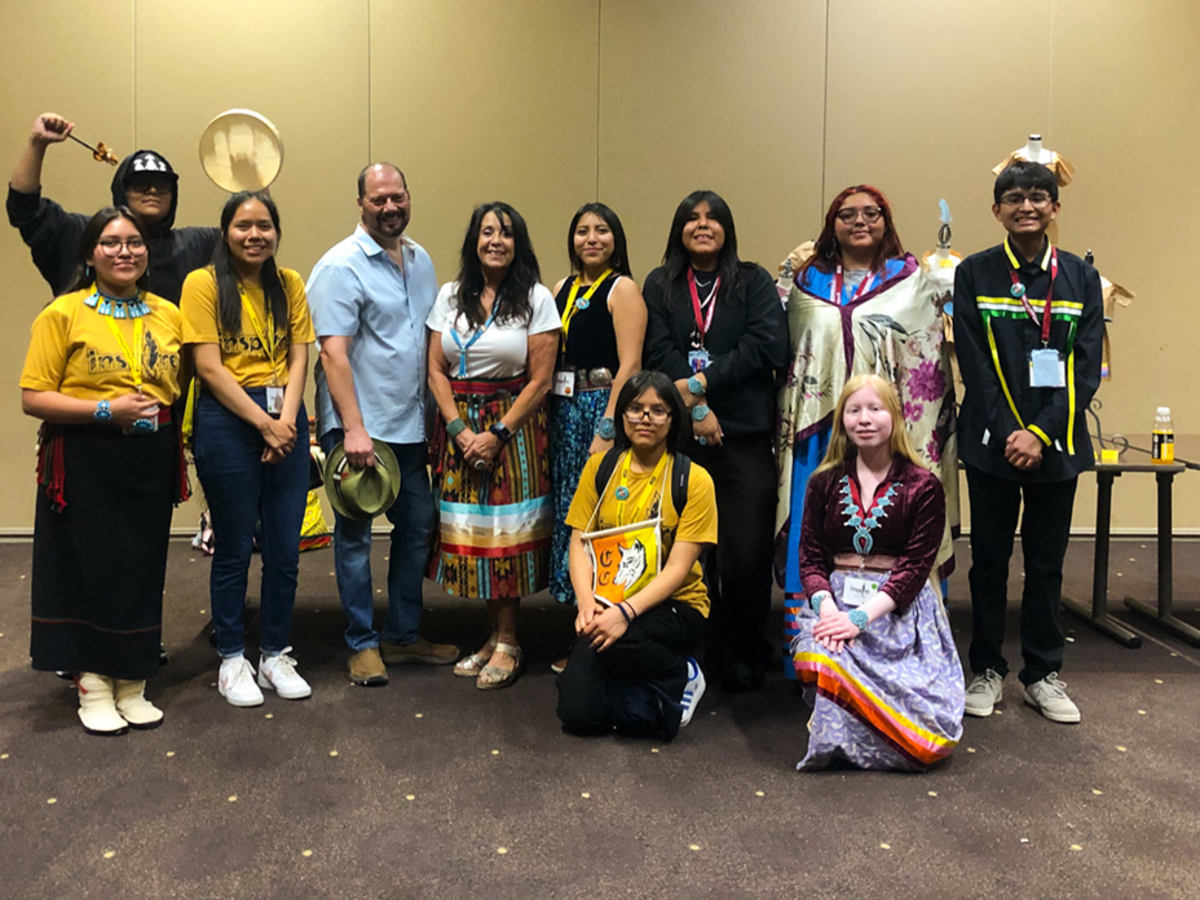
Wanesia Misquadace
Each year, American Indian high school students gather on campus at Arizona State University — where more than 3,000 Indigenous students are enrolled — for INSPIRE, a no-cost college readiness program offered through the ASU Office of American Indian Initiatives.
This year, faculty members from the Herberger Institute for Design and the Arts led hands-on creative workshops as part of the program. Nora Cherry (Payómkawichum/Luiseño/Mission), recruitment and admissions coordinator for the School of Music, Dance and Theatre, facilitated the workshops with Herberger Institute faculty.
Assistant Professor Wanesia Misquadace from the School of Art is an enrolled member of the Minnesota Lake Superior Chippewa Tribe of the Fond Du Lac Band. She led an Indigenous metals workshop and a metal stamping cultural activity. Each student produced a handmade copper bowl as well as a stamped cuff bracelet and ring.
Follow this link to read the entire story by Lacey Chaffee of ASU's School of Music, Dance and Theatre.
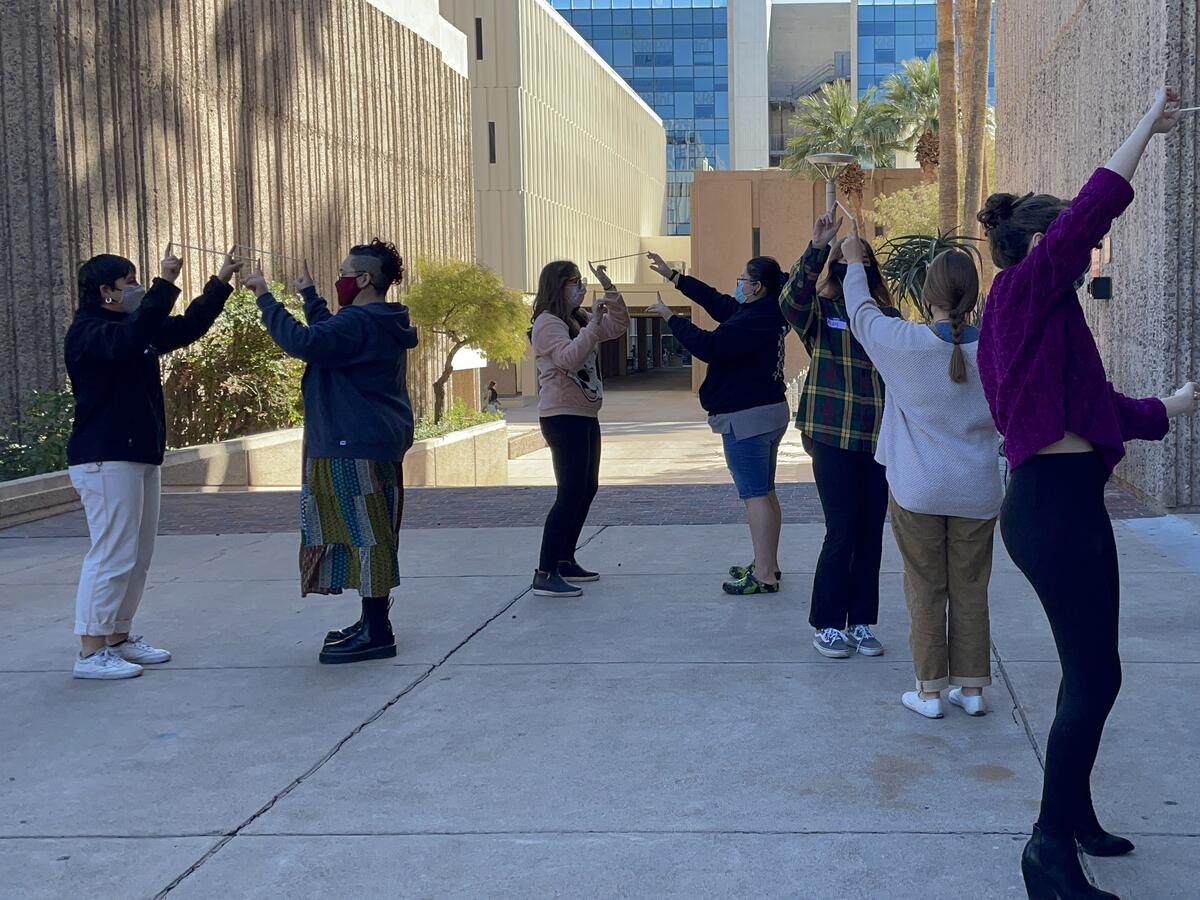
Dr. Cala Coats
In the spring of 2021, students in ARE 496 Methods and Assessment of Learning in Art collaborated with Dr. Jorge Lucero (Professor, University of Illinois, Urbana-Champaign) and Dr. Cala Coats (Associate Professor, ASU School of Art) to performatively rethink the potential of classroom management procedures through a series of creative actions that explored intersections of horseback riding and classroom management, including drawing, writing, and a performative challenge to dance together while balancing two Dowel rods. This concluded with a generative discussion, and the experience resulted in a collective book, “On Horse Riding & Classroom Management.”
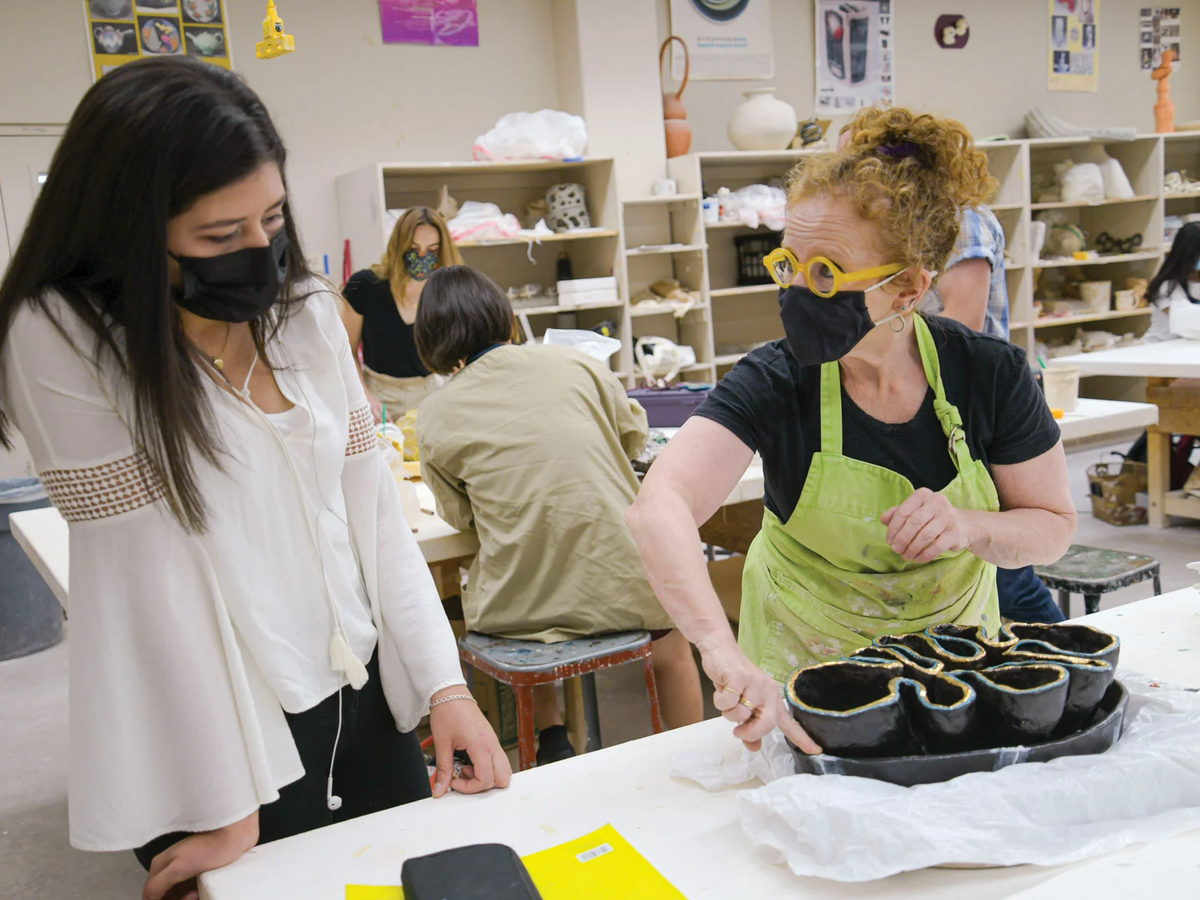
Susan Beiner & Robby Roberson
Susan Beiner is a professor in the School of Art and has taught ceramics at the Herberger Institute for Design and the Arts at Arizona State University since 2006. Her work has been described as "lush, intricate encrusted vessels and wall installations draw the viewer into another world where the line between nature and that which is man-made is blurred." Beiner is the Area Coordinator for the School of Art's Ceramics Area, named the #4 Ceramics Program in the US.
In a unique fusion of art and science, ceramics art students used high-resolution microscopic images of nature for inspiration, and science students used this experience to find new and creative ways to present scientific information.
The course is offered every other year, in the spring semester in collaboration with science faculty members, including Robby Roberson, an associate professor in the School of Life Sciences.
More of Beiner's work with the Sculpting Science Events at ASU
- Sculpting Science 2023
- Sculpting Science 2021
- Sculpting Science 2019
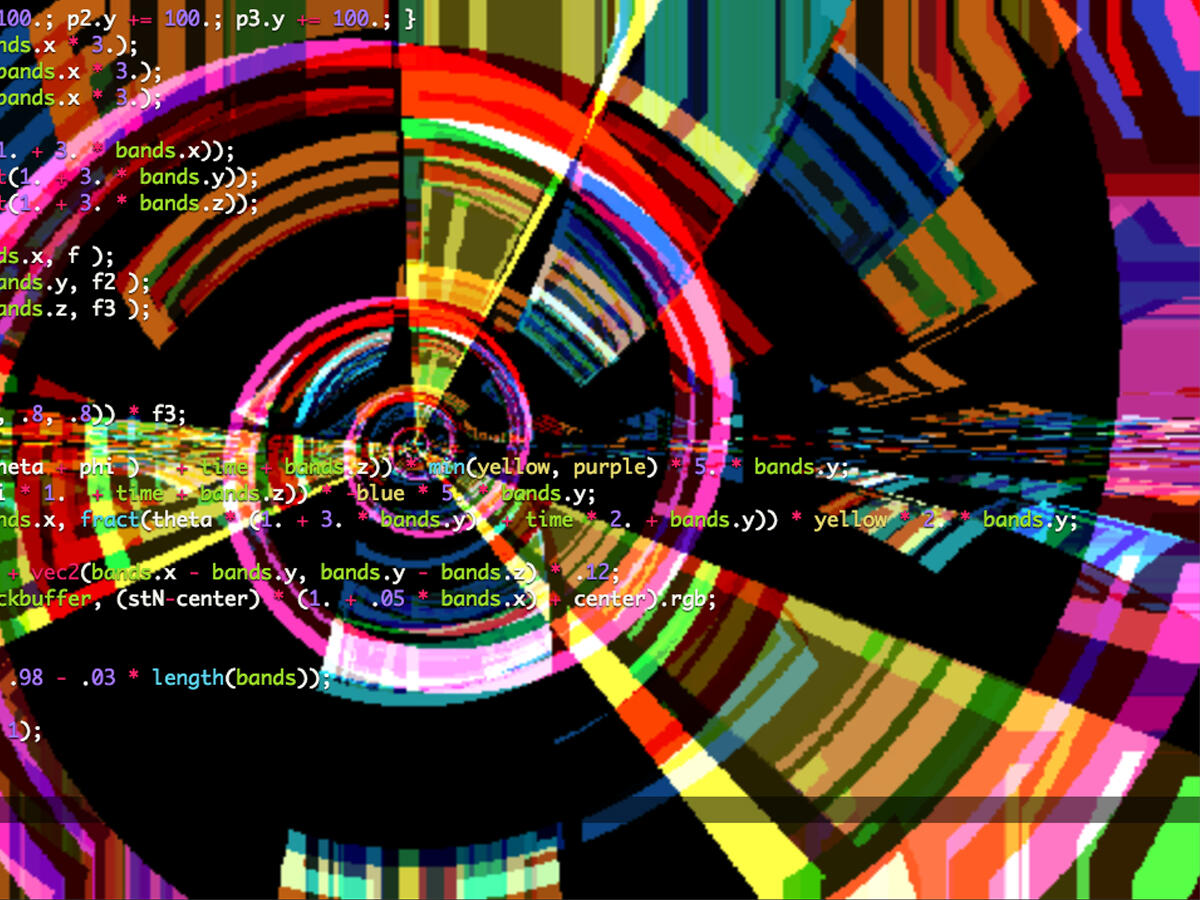
Shawn Lawson
Shawn Lawson received the Leonard Rebooted: Quantum Computing & Artificial Intelligence grant for work on the research project, XAI: Visual Guts. Production grant created by Da Vinci Labs, France and curated/coordinated by Quo Arts Foundation, Spain.